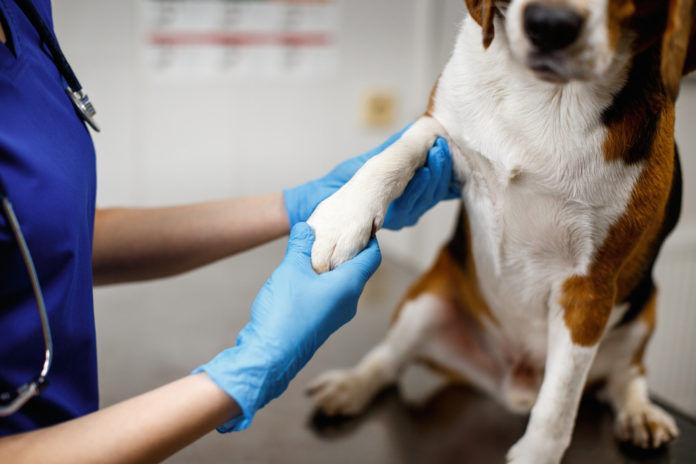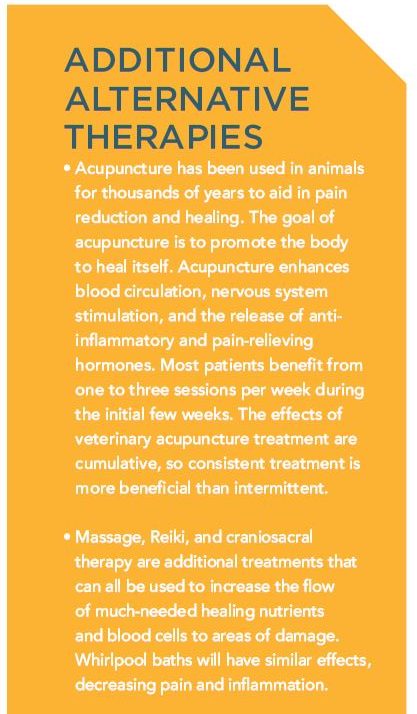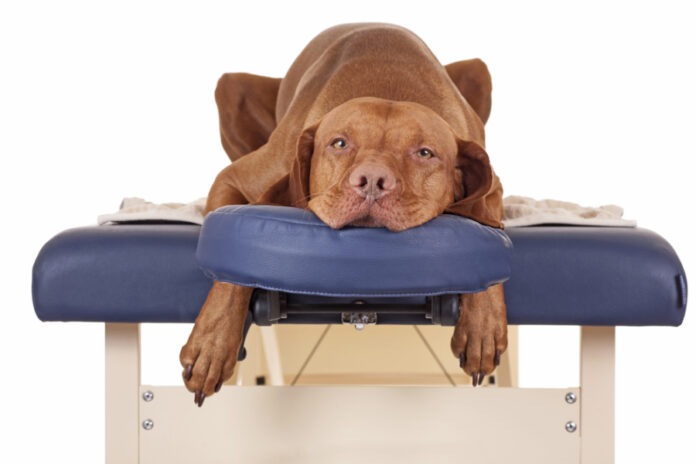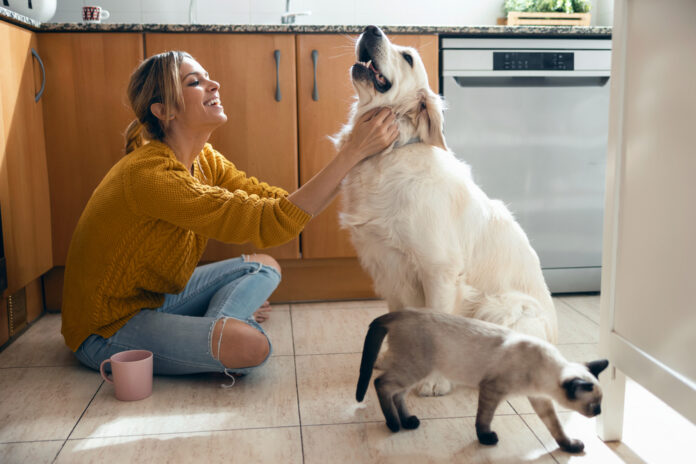Tendon and ligament damage – diagnosis and treatment options for dogs

As our dogs get older, they become more prone to tendon and ligament damage caused by injury or wear and tear. Today’s diagnostic tools and treatment options are many and varied, and can help pinpoint and heal the damage as well as alleviate discomfort.
Our dogs are living longer than ever before, which means diseases associated with aging have become more common. Some of the most familiar ailments in dogs include arthritis, as well as tendon and ligament damage. These issues cause pain, gait dysfunction, and joint deformities. Thanks to the great strides being made in the diagnosis and treatment of these conditions, much can be done to alleviate them and help your dog stay pain-free and comfortable.
Diagnostic tools have improved
If you suspect your dog is experiencing tendon or ligament damage, your veterinarian can perform an examination to pinpoint the origin of the problem, using a variety of modern diagnostic tools. Depending on the issue, an orthopedic, sports medicine, or rehabilitation specialist may be required to diagnose and treat the condition. Currently-employed diagnostic tools currently may include:
- Physical exam: Decreased range of motion in individual joints or an entire limb; pain on palpation; loss of muscle mass; swelling; heat; and inflammation may be found on examination.
- Radiographs: An x-ray of the joints and spine can easily show bone spurs, eroded cartilage, and joint swelling. Soft tissue tendon and muscle injuries may be harder to determine.
- CT scan or MRI: Soft tissue injuries may be more easily visualized using these techniques. General anesthesia is required in order to perform these tests.
- Digital thermal imaging: Thermal imaging cameras provide color-coded pictures of the body surface temperature. Increased temperatures may indicate overuse, inflammation, infection, or malignancy. Decreased temperatures may indicate disuse of an area or neurological dysfunction. By comparing one limb to another it is easy to determine the areas to focus on.
- Pressure plate analysis: This device consists of four scales connected to each other. The dog stands with one foot on each scale, allowing the doctor to see if one side is bearing more weight. When pain is present, the dog will often shift more weight to one side when standing.
- Force plate gait analysis: The dog is walked or trotted along force plates connected to a computer system that analyzes gait imperfections. This tool is used more often in dogs with subtle lameness issues not easily detected by watching them move naturally.
Improved diagnostic tools allow veterinarians to offer more targeted therapies. These tools can also be used to re-evaluate the dog during and after therapy as a way to determine and measure how effective the treatment is.
 Today’s treatment options
Today’s treatment options
Therapies for tendon and ligament damage range from simple to complex. Treatment goals should include pain reduction, improved circulation, and the strengthening and nourishment of tendons, joint tissues, and muscles. Obesity puts excess strain on joints and muscles, which means weight reduction in overweight dogs can vastly improve mobility. Therapies can include nutraceuticals, CBD, supplements, and/or food therapy as well as the following.
Physical therapy
Physical therapy has become a mainstay treatment. Exercise balls, range of motion exercises, dry treadmills, and underwater treadmills can be used to strengthen muscles once tendon or ligament damage has been repaired. Hydrotherapy through swimming is a great way to strengthen limb function without concussive forces on the limbs.
Prolotherapy
Prolotherapy is also referred to as “nonsurgical ligament reconstruction”. A mild irritant solution is injected into the affected ligaments and tendons. The injections cause localized inflammation that activates the healing process and directly stimulates the growth of new ligament and tendon tissue. As the new tissue grows, the tendons and ligaments grow stronger and are better able to support and maintain normal joint stability. When this occurs, pain is alleviated. The basis of success with canine prolotherapy is that it treats the weak or torn tendons and ligaments, making them stronger and more supportive. Because the injections are somewhat painful, sedation is commonly required during the procedure.
Pulse electromagnetic field (PEMF) therapy
PEMF therapy is safe and noninvasive. It uses a pulsing current that flows through a coiled wire to create a magnetic field. It is imperative that PEMF therapy is administered daily in consecutive sessions. The electromagnetic fields and frequencies generated during PEMF promote cellular regeneration and improved cellular function. Some of the health benefits of PEMF for dogs include better circulation, increased cell metabolism, improved energy production, and increased endurance. PEMF devices can be purchased or leased for home use. Most dogs find the pulses soothing and relaxing, and may even sleep during treatment sessions.
Cold laser therapy
Cold laser therapy is painless, non-invasive, and offers an alternative to surgical repair of tendon and ligament injuries. The two commonly-used classes of therapeutic laser are Class III and Class IV. Class III lasers are lower-powered and typically use shorter wavelengths. Class IV lasers are higher-powered and use longer wavelengths. Laser therapy lessens pain, relaxes muscles, and improves circulation by causing vasodilation, which improves tissue oxygenation and supports the migration of immune cells into the tissue, further aiding recovery. Multiple treatments are needed to achieve a positive outcome.
 Shockwave therapy
Shockwave therapy
Shockwave therapy penetrates much deeper into the tissues than laser therapy does. Shock wave therapy devices generate a series of focused high-pressure acoustic pulses (sound waves) that travel from the probe through the skin and soft tissue. When the waves meet tissues of different densities, such as where soft tissue, tendons, ligaments, cartilage, and bone meet, the energy contained in the shock waves is released and interacts with the tissue, producing both mechanical and cellular effects. This leads to the development of new blood vessels, reversal of chronic inflammation, stimulation of collagen production, and dissolution of calcium build-up. Protocols vary, but commonly one to four treatments are done, two weeks to a month apart. Improvement may be seen immediately, or it may take a few weeks to see the full effects of the treatment. The procedure is generally performed with the dog under general anesthesia.
Platelet rich plasma (PRP) therapy
PRP therapy is a natural way to promote healing. Platelets contain a remarkable array of growth factors involved in healing, and platelets from a patient’s own blood are concentrated to three to eight times the levels found in whole blood. The concentrated platelet product is then injected into joints or areas where there is ligament or tendon damage. Platelet rich plasma can also be injected intravenously; the platelets are attracted to injured tissues and can travel to multiple sites or to locations that are difficult to inject directly. PRP therapy requires sedation or general anesthesia.
Stem cell therapy
Stem cell therapy is more involved than PRP therapy. Stem cells are those that have not undergone differentiation into a particular tissue type, and therefore have the ability to become different kinds of tissues or organs. Stem cells are harvested from fat that is surgically removed from the patient to be treated. The fat is processed to extract the stem cells, which are then injected into the area of injury. Visible improvements may be seen as soon as ten days after therapy.
Many of these therapies can be used in combination with supplements and medications to achieve greater benefits. More than one modality may be required to achieve the optimal outcome. If your own dog shows signs of pain associated with tendon or ligament damage (see sidebar), work with your veterinarian to learn how it can best be diagnosed and treated.




